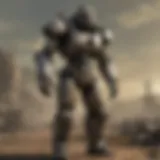Investigating Small Frame Mechanics in Fallout Gameplay
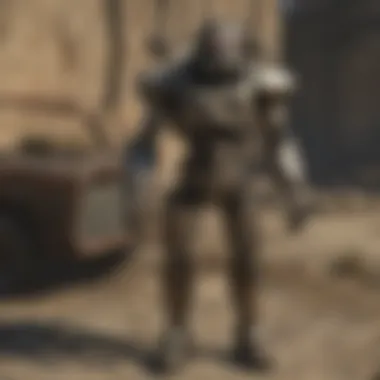
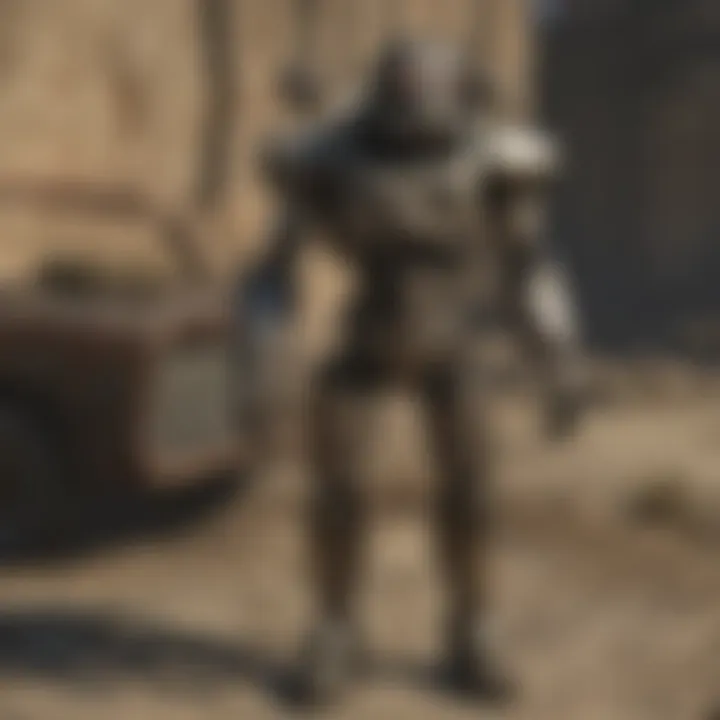
Intro
In the wasteland of Fallout, every detail matters. The mechanics behind small frame attributes might seem like a trivial aspect at first glance, but they can dramatically impact the way a player navigates the harsh realities of life post-apocalypse. Understanding how small frame mechanics work isn’t just a game enhancer—it’s a survival skill in a world where each decision counts.
As players step into the scorched shoes of their characters, they soon realize that the size and agility of their avatar influence not just their combat tactics but also their interactions with the varied denizens of this universe. From melee combat encounters to stealthy interactions, small frame mechanics can tip the scales in unforeseen ways.
This deep dive aims to uncover the layers of gameplay affected by small frame attributes while also weaving in community perspectives, strategies, and the evolving understanding among avid Fallout fans. By the end, players will have a rich tapestry of knowledge that enhances their experience and showcases the strategic depth available within the series.
Lore Insights
Overview of the Fallout Universe
The Fallout universe is a complex tapestry woven from threads of retro-futurism, post-apocalyptic survival, and quirky yet profound social commentary. Set in an alternate timeline where the Cold War escalated into open nuclear conflict, the remnants of humanity navigate a landscape populated by mutated creatures and factions vying for survival.
The small frame mechanics gain significance when we consider the traits influenced by the pre-war culture of glorifying physical fitness contrasted against a backdrop of decay and despair. These mechanics draw players to reflect not only on gameplay but also on the broader themes presented in the Fallout lore.
Key Historical Events in the Fallout Timeline
- The Great War (2077): The decisive event that reshaped the landscape of the Fallout universe, setting off a nuclear apocalypse that decimated civilization.
- Formation of Factions: From the Brotherhood of Steel to the New California Republic, the emergence of dominant factions paints a vivid picture of the power struggles that characterize life in the wasteland. These organizations often have their own perspectives on physicality and skills, which ties back to how players might utilize small frame mechanics.
- The Emergence of Vaults: Each vault represents a mini-experimentation of society, directly influencing the backdrop against which small frame mechanics play out.
Deep Dive Into The Backstory of Major Factions and Characters
The factions each have unique recruitment protocols and ideal attributes, where small frame characters may hold advantages or disadvantages depending on their strategic importance to the faction at hand.
For instance, the varied approaches of characters like Piper Wright or Paladin Danse offer insights on how frame size impacts gameplay and character development, intertwining personal backstories with mechanics that players might easily overlook.
Gameplay Tips and Strategies
When diving into the complexities of small frame mechanics, it's important to have the right tools in your arsenal. Here are some focused tips to navigate the wasteland effectively:
- Stealth is Key: Characters with small frames benefit from stealth mechanics. Use the surroundings to your advantage during encounters.
- Weapons: Favor lightweight weapons that allow for quick maneuvers. Think about using weapons like the Combat Knife or Machete for close engagements.
- Armor Choices: Lightweight armor can be advantageous. Consider using the Leather Armor or anything that does not hinder mobility too much, enabling both stealth and speed.
- Resource Management: Collect resources and craft aids that cater more to agility and stealth rather than brute strength. Items that boost perception and agility can be game-changers.
Character Analysis
Characters in Fallout are richly layered. A couple of noteworthy mentions include:
- Deacon: A small frame character who thrives on deception and stealth, directly relating to the advantages of his frame.
- Curie: Her transformations and adaptations, whether in her human or synth form, show how frame mechanics tie tightly into character evolution.
Relationships between characters also hinge on these attributes. For example, how characters perceive one another based on their size or agility can direct plot dynamics, significantly showcasing the influence of frame mechanics in story arcs.
News and Updates
In recent community discussions, developers have hinted at new updates that could reshape the gameplay mechanics around small frames:
- The introduction of specialized missions that rewards players for agile maneuvers.
- Potential balance adjustments being closely monitored by players.
- The latest on DLC expansions promising multi-layered gameplay that intertwines existing mechanics with new storylines.
Fan Theories and Speculations
As with any thriving community, theories abound about how the Fallout universe might evolve:
- Discussions on how small frame mechanics might play a larger role in anticipated future installations.
- Speculations surrounding the return of iconic characters using small frame advantages in future narratives.
A fascinating theory suggests that the rumored next installment may offer a completely new gameplay style focused on agility and stealth.
By delving into the intricacies of small frame mechanics in Fallout, players not only enhance their experiences but also engage more deeply with the rich narrative telling of this extraordinary universe.
Understanding Small Frame Attributes
Understanding small frame attributes in the Fallout series is paramount to mastering gameplay mechanics and character development. Players who dive into the quirks of small frame characteristics stand to gain a competitive edge, enhancing their overall experience. This section will unravel the intricacies tied to this topic, as well as emphasize the tangible advantages and nuanced considerations that stem from selecting a small frame character.
Defining Small Frame Characteristics
In the realm of Fallout, small frame characters possess distinctive attributes that set them apart in this post-apocalyptic landscape. Generally, characters within this category are shorter than their average counterparts, resulting in a unique blend of agility and stealth. Notably, a character with a small frame often exhibits improved evasiveness, allowing players to navigate through confined spaces with greater ease.
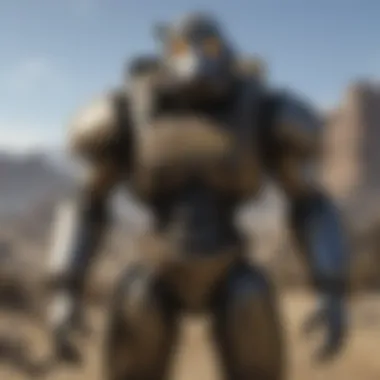
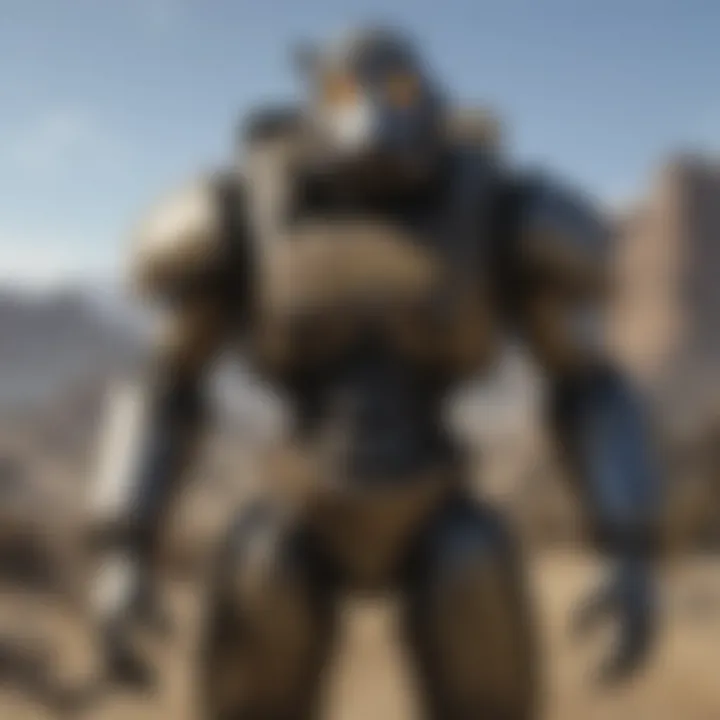
Moreover, being small can offer advantages in combat mechanics. It’s not just about height; it’s about how that shorter stature can grant benefits, like a decreased target profile, making it trickier for foes to score a hit. Additionally, the small frame often comes with an inherent bonus to stealth and sneak skills, which opens doors to tactical prowess, facilitating surprising ambushes or stealthy withdrawals from tight spots.
Importance in Gameplay Mechanics
The importance of small frame attributes is amplified during gameplay, influencing various aspects from combat efficacy to resource management. For those who favor a stealthy approach, small frame characters align perfectly with strategies centered around stealth and subterfuge. Here are some key elements characterizing their gameplay impact:
- Enhanced Agility: Small frame characters often revel in improved agility. They can dodge incoming attacks and get behind cover more effectively compared to larger counterparts.
- Stealth Skills: The built-in bonuses to sneak and stealth greatly amplify a player’s ability to remain undetected, making it easier to pick off enemies one by one, or to evade confrontations entirely.
- Unique Interaction Opportunities: Smaller characters can access areas that may be off-limits to others, like squeezing through cracks or slipping by guards in cramped quarters.
"The small frame isn’t just about size; it's a mindset that players can use to their advantage in a vast, chaotic world."
By grasping these elements, players can not only refine their gameplay but also tailor their character development accordingly. Engaging with small frame mechanics means preparing for a world where planning and strategic thought are valued more than brute force. In a universe as layered as Fallout, understanding these subtleties helps create a richer and more fulfilling gameplay experience.
Character Development and Customization
In the vast landscape of the Fallout universe, character development and customization serve as the backbone of player experience. It allows players to mold their in-game persona, making decisions that align with their individual playstyle. Notably, when it comes to small frame characters, this aspect becomes even more nuanced—a balancing act of selecting attributes that either leverage the advantages or mitigate the disadvantages inherent to a smaller stature.
Choosing the right character traits can immensely shape gameplay and influence strategy. The customization options extend beyond mere aesthetics; they affect how players interact with the world around them, defining everything from combat effectiveness to social interactions with NPCs. Navigating this landscape requires a blend of knowledge, skill, and a touch of creativity.
In this section, we dissect the pros and cons of selecting a small frame character, delving into the gears of skill points allocation within this framework.
Choosing Small Frame: Pros and Cons
The decision to take on a small frame character isn't made lightly. On one hand, a leaner character can offer unique benefits that speak to certain strategic advantages. On the other, it brings along an array of potential drawbacks that could influence long-term gameplay.
Pros:
- Agility and Evasion: Small frame characters often come with enhanced agility. This means quicker movements in combat and the ability to dodge more attacks. If you find yourself in a tight spot, speed is often an ally.
- Stealth Compatibility: Smaller characters are naturally more adept at sneaking. This can open doors to unique missions or allow for creative solutions to avoid confrontation altogether.
- Resourceful Builds: There's a tendency for smaller characters to be more resourceful with limited inventory space. Skillful players can adapt their strategy to compensate for fewer items available.
Cons:
- Limited Strength: By design, smaller frames tend to lack raw power, meaning melee combats might not be favorable. Heavy lifting could be equally tricky as carrying more considerable items.
- Perception Drawbacks: In certain scenarios, characters with smaller frames may be overlooked, which can be both a gift and a curse. While it can help in stealth, it may lead to missed opportunities if NPCs fail to recognize the character's capabilities.
- Skill Points Dilemma: The allocation of skill points can become a double-edged sword. Focusing too heavily on speed and evasion skills may leave other attributes like strength and charisma underdeveloped.
In summary, the choice to play as a small frame character comes with a mix of intriguing advantages and notable challenges. Players intending to venture down this path must weigh their priorities carefully.
Impact on Skill Points Allocation
When shaping a small frame character, precision in skill points allocation is paramount. It’s a balancing act akin to walking a tightrope while juggling flaming swords; one wrong move might lead to disaster. A player's skill points dictate their character’s capabilities across various skills, including combat, persuasion, and survival. As small frame characters naturally lean towards agility and stealth, allocating skill points effectively can maximize these traits.
For instance, it’s wise to invest heavily in agility and stealth skills to exploit the advantages inherent in a small frame. Here, it’s not just about padding the numbers but making each point count. Investing in skills such as:
- Sneak: This should be a priority. Having the ability to slip past enemies unnoticed can save your skin more times than not.
- Lockpicking: Smaller characters often find it easier to maneuver through tight spaces or to access locked areas, making this skill essential for exploration.
- Gunplay over Melee Combat: Due to strength limitations, it’s logical to focus on ranged weapon skills, maximizing the effectiveness of firearms where the smaller stature can be an asset for concealment.
In contrast, you may want to spread points sparsely across certain physical attributes which don't necessarily reinforce the small frame advantage, such as strength or heavy weaponry proficiency. It leads to a character that feels diluted in effectiveness, unable to truly capitalize on the unique attributes that come with being small framed.
Moreover, flexibility in skill points allocation also opens avenues for hybrid character builds, blending combat and stealth capabilities or crafting social skills to navigate dialogues in ways that a heavier character would find challenging. When players juggle these decisions, they create a character more finely tuned to the trials and tribulations of the wasteland.
Ultimately, the integration of small frame mechanics into character development is a vital part of the Fallout experience, prompting players to rethink their strategies and shape their destiny in the post-apocalyptic world.
Strategic Gameplay with Small Frame Characters
Understanding the strategic gameplay aspects of small frame characters in Fallout is pivotal for both new and seasoned players. Characters with these attributes often navigate the wasteland with a unique set of advantages and limitations that enhance the overall gameplay experience. With a small frame, characters can maneuver through tight spaces, utilize stealth, and evade detection more effectively. This section delves into combat strategies tailored for these builds, exploring the fundamentals of stealth and evasion, and how to manage resources efficiently.
Combat Strategies for Small Frame Builds
Combat in Fallout is often a dance between chaos and strategy, especially for smaller framed characters who must capitalize on speed and agility. These characters excel in hit-and-run tactics, frequently moving in and out of the fray to confuse and outmaneuver larger opponents. Here are some key strategies that can enhance combat effectiveness:
- Utilize terrain: Small frame characters can easily exploit the environment. Taking advantage of cover—like rocks or buildings—is crucial.
- Favor ranged combat: Ranged weaponry, such as the Varmint Rifle or the Laser Pistol, suits these builds well, as it allows players to strike without engaging in direct confrontation.
- Aim for critical hits: Small frame characters can achieve improved critical hit chances in certain situations, especially when using stealth.
- Movement strategy: Learn when to charge in for a few quick hits and when to back off. Keeping your distance allows for health regeneration and the option to reset the fight.
By mastering these tactics, players can turn the tables on bigger and bulkier foes.


Stealth and Evasion Techniques
The beauty of small frame characters lies in their adaptability in stealth gameplay. They can often evade conflict and outsmart their enemies. Here’s how to maximize stealth and evasion:
- Sneak skill development: Invest in your sneak skill as it allows you to creep quietly, significantly lowering the chances of detection by NPCs and creatures alike.
- Use stealth boys: Items like the Stealth Boy can be invaluable. They render you nearly invisible, allowing for swift escapes or surprise attacks.
- Know the scripts of NPCs: Observing how NPCs behave can help in planning your approach. Some NPCs have predictable routines that can be exploited for sneaking past or setting ambushes.
- Combat reflexes: Small framed characters must remain aware of their surroundings. This includes understanding the sound mechanics of the game; don’t run on metal grates if you want to stay out of sight.
Evasion is not just dodging bullets; it’s about reading the room and acting accordingly.
Resource Management and Small Frame Efficiency
In the harsh wasteland, managing resources can mean the difference between life and death. Small frame characters often have to be resourceful to leverage their physical advantages effectively. Below are essential considerations for resource management:
- Equipment selection: Choose lightweight weapons and armor. Heavier items can slow you down considerably, making avoidance tactics less effective.
- Scavenging for supplies: Constantly search for stashes or abandoned areas. Being small may give players an edge in squeezing into hidden nooks.
- Utilizing companion dynamics: If partners are being used, select those whose abilities complement the small frame’s stealthy nature, such as characters like Piper or Dogmeat that can assist in distraction.
- Strategic crafting: Crafting resources like health packs or ammunition efficiently can keep a small framed character in fighting condition longer without heavy supply reliance.
Ultimately, success for small frame characters comes from a blend of agility, keen instincts, and prudent resource management, allowing players to thrive even in the most perilous scenarios.
Small Frame in NPC Interactions
The small frame mechanics in Fallout play a crucial role in shaping how players interact with non-player characters (NPCs). These interactions can deeply influence the trajectory of gameplay, offering unique benefits and presenting distinct challenges that players must navigate. Understanding these dynamics enhances the player’s experience, particularly when delving into the rich narrative and social complexity of the Fallout universe. The implications of small frame attributes in NPC interactions highlight how these mechanics can transform a simple conversation into a complex negotiation or a pivotal moment in the game.
Dialogue Options and Outcomes
Engagement with NPCs often takes the form of dialogue, and the small frame attributes can significantly affect the available options during these exchanges. Players with a small frame may find that certain dialogue options become more favorable or, conversely, potentially hinder their chances of persuasion or influence.
For example, an NPC might view a small frame character with suspicion, leading to dialogues that are more curt or confrontational. On the other hand, smaller characters might also have access to options that exploit their diminutive stature. This could include sneaking past guards unnoticed or utilizing charm to disarm tense situations.
Here's a quick breakdown of how dialogue options can be impacted:
- Positive Outcomes
- Negative Outcomes
- Increased stealth in conversations, leading to sneaky persuasion.
- Ability to leverage empathy, as NPCs might assume less threat.
- Dismissive attitudes from larger, more imposing NPCs.
- Limited options in confrontational dialogues due to perceived weakness.
Navigating these dynamics can lead to interesting results, such as securing vital alliances or facing unexpected hostility based on the player's size attribute.
Small Frame Perception by NPCs
The perception of a player’s character by NPCs is deeply intertwined with the small frame mechanics. Characters that are shorter in stature frequently face biases that can either disadvantage or advantage them in various scenarios. This perception impacts how NPCs respond to the player, shaping the overall interaction.
NPCs might often underestimate a small frame character's capabilities, offering opportunities that a larger character could easily miss. For instance, a merchant may be less guarded when dealing with someone they deem to be non-threatening. Conversely, certain NPCs may display overt prejudice against smaller characters, potentially blocking quest opportunities or leading to derogatory dialogue.
To illustrate:
- NPC Responses
- Friendly Approach: Smaller characters might receive bonuses in bartering or trades, as some merchants assume a lighter frame correlates with a lighter wallet.
- Distrustful Glares: Others, especially in hostile regions, might look upon them with wariness, missing opportunities to form alliances due to preconceptions.
"In the wasteland, size matters until it doesn't. Cleverness can outsmart brute strength, especially when the odds seem stacked against you."
Understanding these perceptions allows players to navigate the complex social landscape effectively. As players engage with the world around them, their small frame can become not just a physical characteristic but a strategic element in how they elicit responses from the diverse array of NPCs scattered across the unforgiving terrain of Fallout.
The Role of Small Frame in Enviromental Challenges
Exploring the role of small frame mechanics in Fallout unearths a fascinating dimension of gameplay that extends beyond mere aesthetics. This character attribute is not just a numerical boost or a minor trait; it deeply intertwines with how players interact with the rich environments of the game. Small frame characters maneuver through challenges inherent in the urban decay and exposed wilderness of the Fallout universe in distinctive ways. Understanding these characteristics gives players an edge in their journeys through the desolate landscapes and bustling settlements alike.
Navigating Urban and Natural Landscapes
Urban environments in Fallout can pose their own hurdles, often filled with tight spaces, debris, and harsh enemies. Small frame characters can easily slip through narrow alleys, utilize hidden alcoves, and reach vantage points from birds' eye views where larger characters might struggle. For instance, the Commonwealth in Fallout 4 is riddled with dilapidated buildings and underlying tracks that can be explored more readily by smaller characters. This means that they can evade confrontations that other players might find unavoidable, effectively using the urban landscape as a tactical advantage.
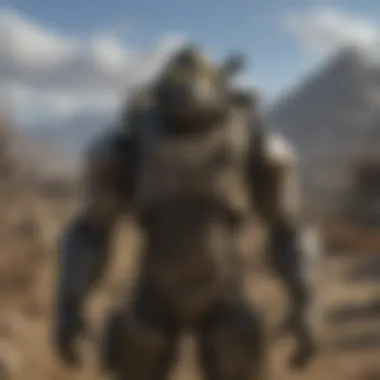
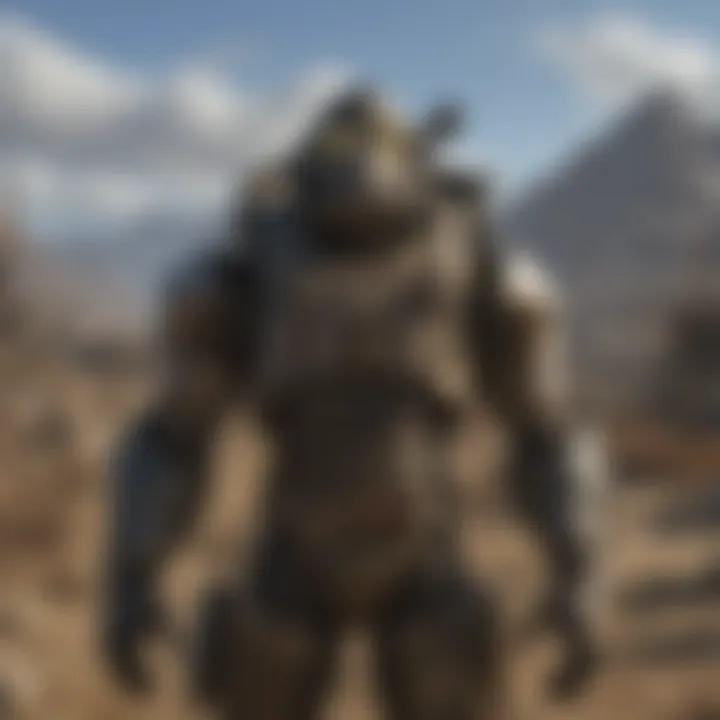
Natural landscapes also benefit from this small frame advantage. Moving through the Glowing Sea or the Mojave Wasteland allows these characters to hide among the rocks or foliage, perfect for stealthy maneuvers. They can squeeze through smaller gaps that would otherwise grant larger figures a hard time, unearthing treasures and secrets in each crevice. In essence, navigating through both terrains quickly opens up new strategic paths that enhance the overall gameplay experience.
Access to Hidden Areas and Secrets
A notable aspect of small frame mechanics lies in unlocking unexplored corners of the Fallout environments. These characters have a knack for accessing hidden areas that larger characters cannot, leading to the discovery of valuable loot, unique items, or Easter eggs placed throughout the game.
Secret locations are peppered across various Fallout iterations. For example, the Nuka-World expansion offers nooks and crannies filled with hidden treasures meant for the observant and agile. As a small frame character, players can explore paths behind large structures, sneak through ventilation ducts, or travel through concealed tunnels. This advantage means that while others might miss these opportunities, small frame players can collect resources that help bolster their characters.
Furthermore, engaging with the game's rich lore often involves piecing together stories from these hidden sections. It becomes a blend of environmental storytelling and character development that larger characters might inadvertently overlook. The finesse in accessing these secrets underscores how thoughtfully designed Fallout environments cater to diverse player strategies.
"Small frame characters experience the world in Fallout with a unique lens, turning challenges into opportunities through access and agility. They may be smaller in physique, but their impact on the game's narrative and exploration is monumental."
In summary, small frame mechanics not only influence character development but also enrich the player's experience within the intricate landscapes of Fallout. These characters navigate urban decay and natural ruins with nimble precision, accessing hidden secrets that pave the way for deeper gameplay and discovery.
Community Perspectives and Discussions
Understanding the community’s take on small frame mechanics brings a rich layer to the narrative of Fallout gameplay. Gamers don’t just play; they dissect, analyze, and weave their thoughts into an ongoing dialogue that shapes how others approach the game. This group engagement enhances player experience and provides valuable insights that may not be apparent through individual exploration.
Fan Theories Surrounding Small Frame Mechanics
When it comes to fan theories, the creativity is boundless. Players brainstorm various implications of small frame attributes, often suggesting alternative play styles or strategies that deviate from the norm. For instance, some players propose theories around maximized stealth mechanics, asserting that a small frame character can silently navigate through heavily guarded areas. They argue that the ability to crouch, combined with the right perks, allows these characters to achieve objectives that taller builds may struggle with, like evading detection lines in areas crawling with enemies.
Moreover, these theories aren't just for speculation; they fuel discussions on forums. Reddit threads often boast debates about the optimal skill trees for small frame builds, ranging from agility maximization to enhanced sneaking capabilities that truly capitalize on the physical attributes. Players leaning towards combat-centric gameplay may then start to wonder whether the rumored mechanics for swift dodging have a basis rooted in the game code.
Evolving Analyses from Game Directors and Designers
Even the creators of Fallout have taken notice of the impact community discussions have on gameplay mechanics. Insights from game directors and designers reveal an evolving understanding of how small frame characteristics influence player choices. In interviews, developers often share anecdotes about how fan feedback leads to refining mechanics in subsequent titles.
For example, in the lead-up to the release of Fallout 76, the designers embraced community suggestions to better balance small frame characters. Acknowledging the unique advantages they offered, adjustments were made to ensure that gameplay remained engaging yet challenging. This interaction between players and developers cements the idea that the game is a living entity, where player experiences are inherently valuable.
"The discussions among players are often as intricate as the game itself, prompting us to rethink our approaches and learn from our dedicated community." - Fallout Game Dev
In wrapping up this section, the relevance of community perspectives cannot be overstated. The collaborative environment encourages nuanced strategies and fosters a deeper connection between players and the game. This rich tapestry of theories and analyses showcases the dynamic interplay of creativity and game design, paving the way for future innovations in the Fallout universe.
Future of Small Frame Mechanics in Upcoming Titles
As we look ahead to the future of the Fallout series, the evolution of small frame mechanics will undoubtedly be a focal point for developers and players alike. Understanding how these mechanics might be adjusted or expanded is crucial for anticipating gameplay dynamics and strategizing character development. Small frames not only define a player’s physical attributes but also influence their interactions in the vast, unforgiving landscapes of the Fallout universe. Thus, attention to these details can enhance the overall player experience, ensuring that both seasoned veterans and newcomers find compelling reasons to explore and engage with the content.
Anticipated Changes and Innovations
The anticipation surrounding potential changes to small frame mechanics suggests a more nuanced approach to character customization in future titles. Players are eager for more innovative ways to express their unique play styles. Potential innovations might include:
- Expanded Attributes: Developers could incorporate additional small frame attributes, such as enhanced agility or specialized stealth techniques, allowing players to tailor their characters even further.
- Dynamic Skill Trees: Imagine skill trees that adapt based on the frame selected. Small frame characters might unlock specific skills or perks that cater exclusively to their physicality, offering opportunities for diverse builds.
- Environmental Interactions: The landscapes within Fallout could come alive with mechanics that respond distinctly to small frame characters. For instance, small frames might access areas larger characters cannot, or gain unique benefits when navigating tight spaces.
The integration of immersive AI could also play a significant role. By enhancing NPC interactions, developers can create a world where small frame characters experience unique dialogues or challenges based on their size, augmenting the narrative experience as they traverse the wasteland.
Community Expectations and Speculations
As with any gaming franchise, community expectations often fuel the discussions and speculations regarding future mechanics. Players have expressed a range of hopes and theories about how small frame attributes might evolve in upcoming titles. Some of the prevalent thoughts include:
- Balance Enhancements: The quest for balance remains paramount. Players hope that future updates will rectify any perceived disadvantages associated with small frames, ensuring they are formidable in combat while still offering benefits in stealth and exploration.
- Increased Customization Options: Fans yearn for a wider variety of visual and functional customization options. Allowing players to modify not just the appearance but also the attributes and advantages of small frame characters could lead to richer gameplay experiences.
- Community Input: Players often discuss the importance of developer responsiveness to feedback. Incorporating community suggestions could prove vital; whether through Reddit discussions, fan polls, or even informal feedback during beta tests, players have valuable insights that can shape specific mechanics and adjustments.
"The beauty of Fallout lies in its community. The dialogue between players and developers can spark transformative ideas for the next installment."
As Fallout continues to captivate a diverse audience, the ongoing conversation around small frame mechanics promises to foster a vibrant gaming dynamic, propelling players on new journeys across familiar territories.
End
In understanding the nuances of small frame mechanics in the Fallout series, it becomes evident how these attributes shape a player’s journey through the post-apocalyptic landscape. The complex interplay between character design and gameplay strategies is not just a matter of aesthetics; it significantly impacts how one engages with the world and encounters various challenges.
Recapping the Importance of Small Frame Mechanics
Small frame characteristics create a unique set of advantages and disadvantages that can define the effectiveness of a player. Here are several pivotal aspects of these mechanics:
- Enhanced Mobility: Small frame players benefit from increased agility, allowing for swift movement and easier navigation through tight spaces. This mobility is often crucial in combat situations where positioning matters.
- Strategic Resource Allocation: Players utilizing small frame characters often find themselves focusing on stealth and agility-based skills. Understanding how to allocate skill points effectively can lead to the development of powerful and unique builds.
- Interaction Depth: The mechanics provide distinct dialogue options and interactions with NPCs, adding layers to the narrative experience. Certain conversations or quests may only be accessible to players who embrace small frame traits.
- Environmental Adaptability: Small frame characters can navigate various environments differently, which not only opens up exclusive paths but also allows them to explore hidden areas of the game world that larger characters might struggle to reach. This aspect significantly enriches the experience of exploration.
- Community Engagement and Theories: Small frame mechanics have sparked significant discussion among the Fallout fanbase, which can lend insights into evolving game dynamics. Community theories offer players new strategies and enhance gameplay through shared experiences and discoveries.
